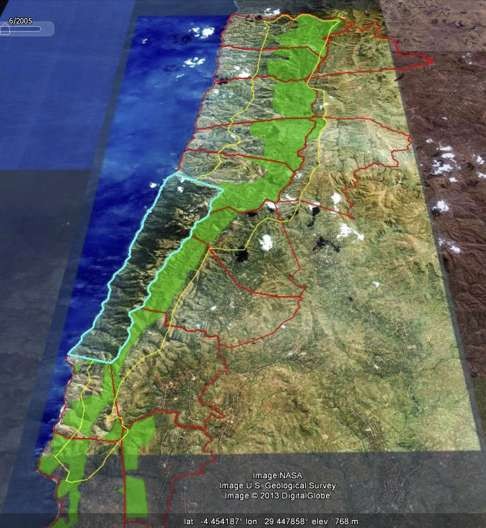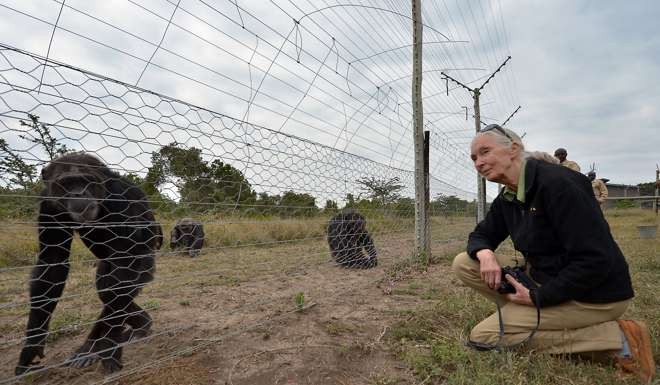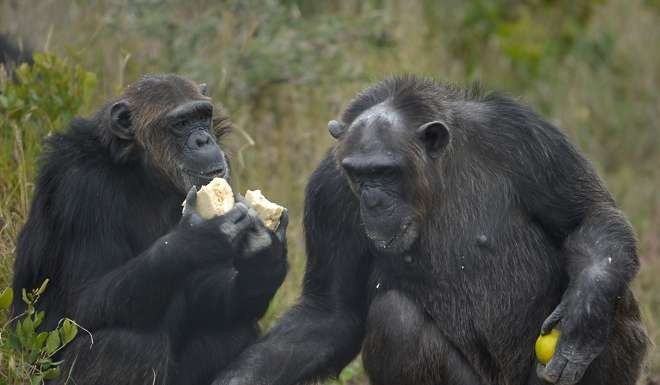At 82, primatologist Jane Goodall embraces digital technology to help save the planet
Scientist famous for her work with chimpanzees, and her team show forest dwellers in Tanzania digital maps of their home that reveal loss of tree cover, encouraging them to replant and to manage resources better

Best known for rolling with chimpanzees in the African wild and uncovering many previously unknown facts about the apes, Jane Goodall is embracing modern technology in her mission to save the planet.
And at 82, the British primatologist said she has more energy than ever, particularly due to her work with young people around the world.
“I do have hope for the future, even though I think I have seen as much as anybody of the harm that we are inflicting on this planet,” Goodall said at the recent International Union for Conservation of Nature’s World Conservation Congress in Honolulu.
“We are coming up with new technology all the time that will enable us to get in greater harmony with nature.”
Goodall rose to fame for her pioneering, up-close study of the behaviour of chimpanzees in the 1960s.
I do have hope for the future, even though I think I have seen as much as anybody of the harm that we are inflicting on this planet
She was the first researcher to give them names – rather than numbers, and the first to observe them using tools, a capacity that was until then thought to belong only to humans.
Now, the Jane Goodall Institute is using satellite imagery, digital mapping and Nasa technology to encourage large-scale conservation projects in the forests of Africa.
The initiative, led by Lilian Pintea, has allowed people living in Gombe National Park in Tanzania to see high-resolution digital maps of their forests for the first time.
Seeing how these landscapes have changed since the ’70s, with tree numbers dwindling and important chimp habitat lost, has encouraged them to protect their forests, better manage their own resources and replant trees.

“The reason why this change happened was because we merged and integrated this perspective from above with the local understanding about the nature of the ecology in the right context at the community level,” Pintea says.
Goodall says she is not involved with the technical details – that is all handled by Pintea, an expert in mapping tools who previously worked at the World Bank.
But she told the congress she is in awe of the power of US space agency technology to make connections with the most primitive cultures. “I find this a very fascinating juxtaposition of ideas,” she said.
Goodall says she travels 300 days of the year, and is inspired by meeting young people, particularly through a programme she began in 1991 with a dozen students in Tanzania.

Called Roots and Shoots, theprogramme encourages children to come up with ideas to help people, animals and the environment, and is now a major movement in nearly 100 countries.
“As I travel around the world, I meet more and more young people who seem to have a new determination that they are going to take over and they are going to make change,” she says.
“Social media used in the right way can bring together people around the world in unprecedented numbers,” she adds.
Goodall spoke at several sessions during the IUCN World Conservation Congress last week, opening at least one of them by stepping up to the microphone and mimicking the greeting call of a wild chimpanzee. The packed room cheered and applauded in response, and a few women wiped away tears.
She is also featured in a new film about the perils of climate change, called Time to Choose, written and directed by Academy Award winner Charles Ferguson.

“You can see how far Jane has come out of her comfort zone,” said the film’s executive director Jeff Horowitz, remarking on Goodall’s move from the wilderness to the forefront of modern technology.
Goodall “is generally known to strike up a conversation with everyone around her”, he adds.